Winchester Townsite
Introduction
Text-to-speech Audio
The Turtle Lake Lumber Company named their company town after their principle investor, Walter Winchester. When the mill closed the economy revert back to tourism, but lasting impacts on the land, water and people remain. The Stueben Outdoor Company bought much of the property and describe Winchester as follows in their brochure.
“Winchester is in the Manitowish Country, right in the heart of the big north woods and this location was chosen because a chain of lakes, streams and rivers led right up to it. Winchester was a lumber mill town and water was the means of transportation.
As great trees were felled and their branches lopped off they were floated down to the chutes of the mills of Winchester where they were sawed into boards and shipped to lumber markets.”
Images
Winchester circa mid 1920s- early 1930s. Coal stack is the tall building in the center background. Probably taken were 3rd Street rounds a corner and turns into Townsite Road.
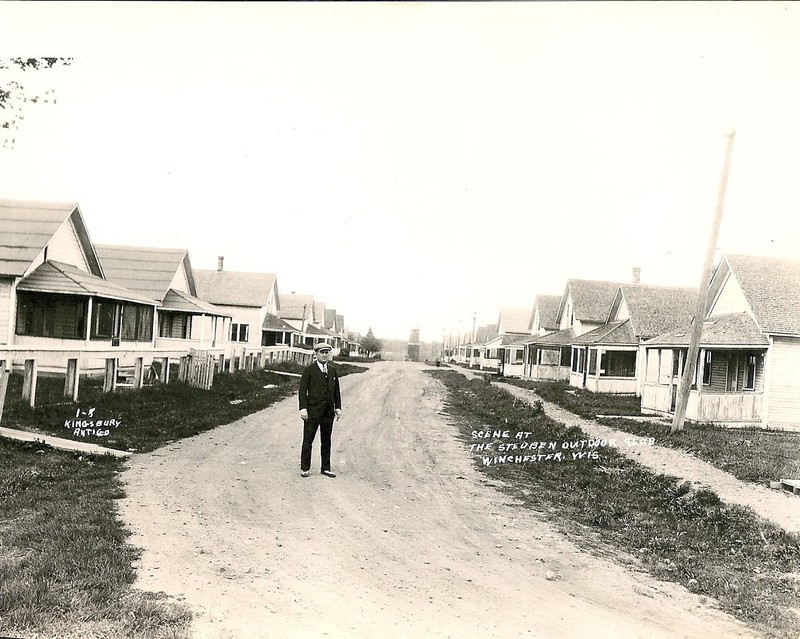
View from on top of the coal stack looking south. The company store is the large building in the foreground on the left. Boarding house in behind that with the gazebo. Circa 1920s
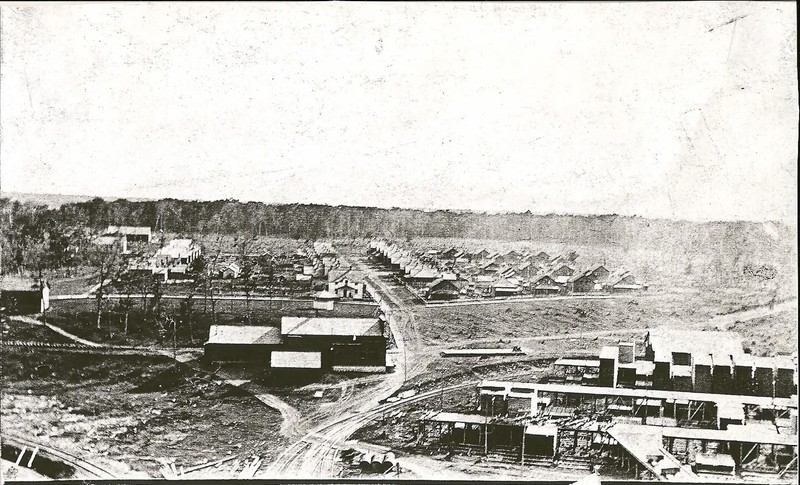
Winchester Townsite looking North. Coal stack is the tall building in the center background.
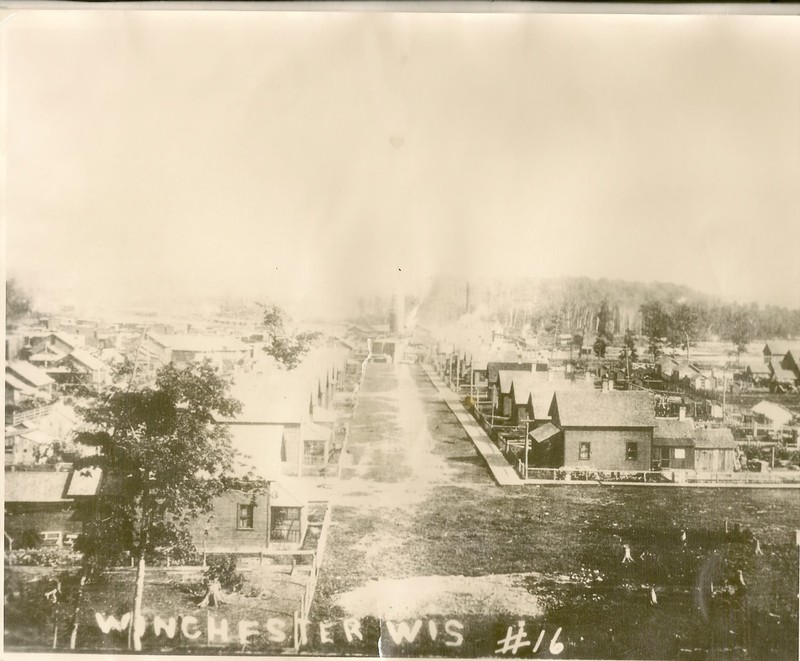
Winchester Townsite looking East. Former Winchester Schoolhouse/Current library is on the right. South Turtle Lake in background with logs piled in waiting to be milled.
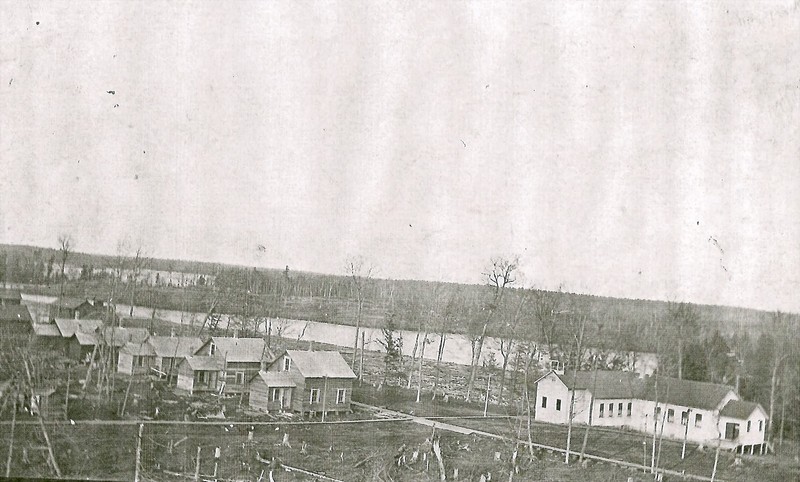
'Engine Room' provided the power to the whole company and town via steam engine.
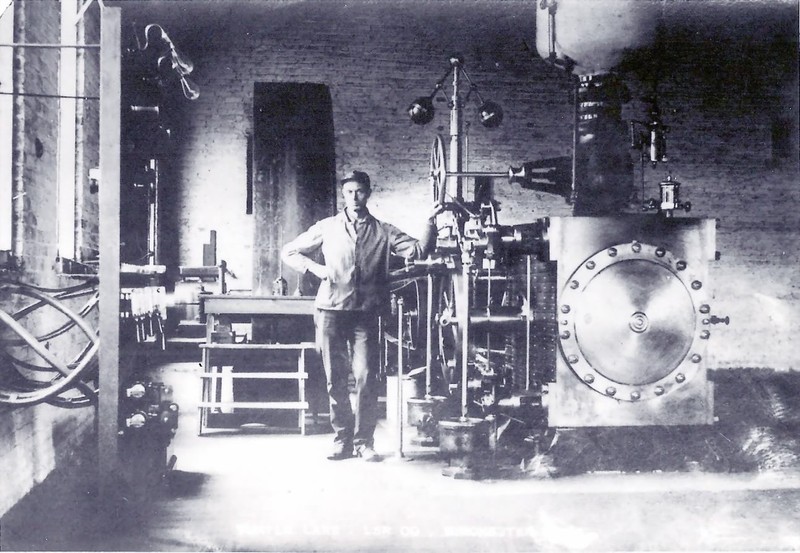
View of Lumber Mill operations. Company store in the foreground, planning mill and saw mill in background with coal stack.
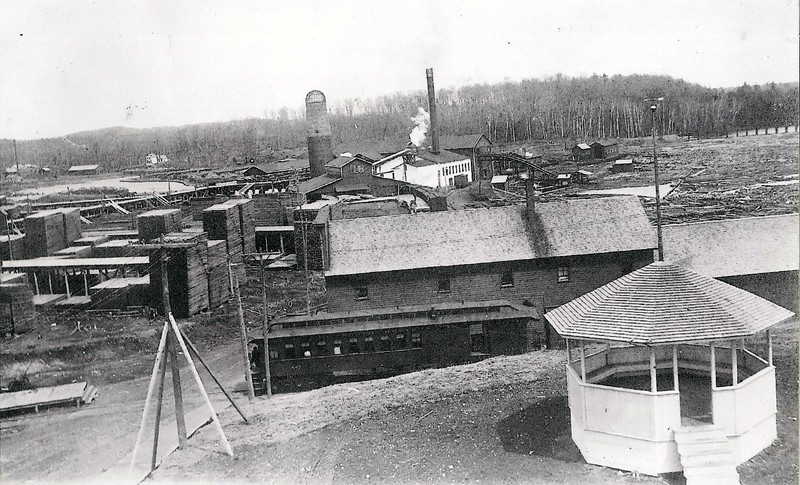
Company Townhouses with boardwalk and fence.
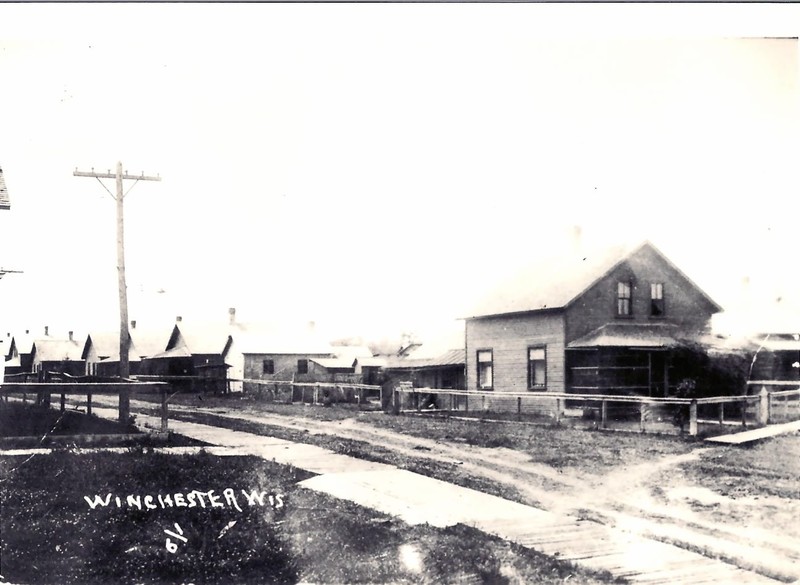
Backstory and Context
Text-to-speech Audio
The Turtle Lake Lumber Company chose to name its company town after their principal investor, Walter Winchester. Mr. Winchester was known as a very kind and orderly man, often referred to as “The Man With the Shiny Shoes” due to his tidy appearance. The Company Town that bore his name had very similar qualities. Boardwalks were built connecting all the houses so people could stay out of the dust and mud. A beautiful two room schoolhouse was built for the education of the local children. Raised runways allowed timber to be stored stories high, out of the snow and mud. Over fifty company houses were built in neat six square blocks. Over time multiple boarding houses operated for those that could afford it as well. People who could not afford permanent housing or a room at a boarding house could stay in “Tar Town”, now the Town Park. People there lived out of tents and simple shelters made out of tar paper and scrap wood. Native American seasonal workers were employed to scrape bark off of logs, they camped on the hill next to where the lumber was stored. A Community Building was also erected and served as a town meeting place, polling place, dance hall, event center, barber shop, ice-cream parlor and tavern before eventually burning down. Mobile horse stalls in the form of modified box cars ensured the ability to care for and move horses anywhere. Everything was painted white per Mr. Winchesters wishes. Each house came with a set of tools so the residents could do their own up keep and an apple tree to provide food for either people or livestock. A company store provided for all their other needs. At one point it was known as the most picturesque Lumber Town in Wisconsin. At its peak, the company town of Winchester boosted over 500 men working in the mills and camps, their families, a few railroad employees and multiple farms.
Railroad bridges crossed South Turtle Lake in two places, a foot path existed between North and South Turtle Lake and another Rail Bridge crossed the creek connecting North Turtle Lake and Rock Lake. There was also a rail line running south west to Mercer. Railroad tracks serving the Mill ran across south Turtle Lake and along the western shore where most the buildings were. The main mill was located across from the northernmost island in south turtle lake. Power was supplied with a steam engine, housed in a building rightly named “The Engine Room”. The town was supplied with power from 8am to 8pm every day. To let people know the power was going out the conductor of the engine room would dim the lights a bit before 8pm to give people a warning. When someone gave birth or died, it would also be communicated with the lighting. One flicker meant someone died, two meant someone was born. Excess steam from the engine room would be pumped through a pipe into the lake creating a hot pond between the shore and island through which logs could be stored year-round. A giant coal stack was in the center of the mill site towering over the area. Wood and coal smoke was prevalent in Winchester from the operations at the mill and hearth/wood stoves in town.
The Company Town was not meant to be a permanent sustainable community. Investors made decisions based on profit and available resources. When the available resource had dwindled to the point that it was no longer profitable to sustain the saw mill it was shut down. The day this happened was celebrated as the progress of man. This happened to Winchester in 1926. The town threw a parade through the streets and people came out of their homes to cheer and bang pots and pans when the last piece of lumber was milled. The Investors of Turtle Lake Lumber Company also owned the Presque Isle Mill and no longer felt having two large operations so close together was good for the bottom line and decided the Turtle Lake mill would be the one to close.
Sources
Notes from interview with Helen (McGlinn) Schmidt conducted by Elizabeth Gerhardt August 25, 1989
Notes from interview with Lila Brunell conducted by Elizabeth Gerhardt September 25, 1989
Notes from interview with Emanuel Wysocki conducted by Elizabeth Gerhardt August 11, 1989
Laabs, Joyce. "Helen Schmidt, Lifelong Winchester Resident." Lakeland Times August 22nd, 1977. .Pages 1&3.ts
Hand Drawn Map Circa 1918 by Lyle Mynning Housed in Winchester Public Library
Winchester Library Archives.
Winchester Library Archives.
Winchester Library Archives.
Winchester Library Archives
Winchester Library Archives
Winchester Library Archives
Winchester Library Archives
